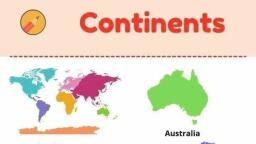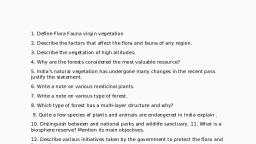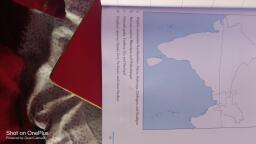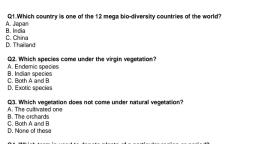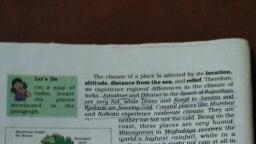Question 1 :
Which one of the following types of vegetation is referred as Monsoon forest?
Question 6 :
Which one of the following is the characteristic vegetation of regions between the snow line and about $3000$ meters above mean sea level of the Himalayan region?
Question 7 :
<span>Natural vegetation of a region depends mainly on climate and hence there are distinctive areas of different types of vegetation. The governing factors in general are temperature, and precipitation. Accordingly, pine forests in India are found in _______.</span>
Question 11 :
$1$. The Shivaliks have tropical moist deciduous flora.<br>$2$. The Bundelkhand plateau has thorn and scrub forest type of vegetation.<br>Which of the statements given is/are correct?<br>
Question 14 :
Consider the following statements :<br>A. In the Tundra region, animals have thick fur and thick skin.<br>B. Most of the animals in grasslands are herbivores.<br>C. In tropical rainy forests, many animals live on trees.<br>Which of the following best explains these statements ?
Question 20 :
<div>Consider the following statements and select the correct answer using the code given below:</div><div>1. The northern slopes of the Himalayas are covered with dense forest.</div>2. The Western slopes of the Western Ghats area covered with dense forests.<br/>
Question 21 :
What percent of the total land area in India is covered by forest?
Question 23 :
Forests and wastelands belonging to both government and private individuals and communities are called _______.
Question 24 :
Rats, mice, rabbits, fox, wolf, tiger, lion, wild ass, horses and camels are common animals found in  _______.
Question 26 :
Which of the following is/are correct about the Rann of Kutch?<br/>1. It is a flat saline marshland.<br/>2. It is in Rajasthan.<br/>3. It is the home of the Indian Wild Ass.<br/><span>4. It is a unique land formation supporting several singular species of fauna.</span>
Question 27 :
How many national parks have been authorized till now in India?
Question 28 :
The forests that are found on the Western Ghats and Andaman and Nicobar islands are _______________.
Question 29 :
Which one of the following regions of India is now regarded as an ecological hot spot?
Question 30 :
Match List - I and List - II and select the correct answer by using the codes given below the Lists :<table class="wysiwyg-table"><tbody><tr><td><b>List - I<br></b>(Timber)<b><br></b></td><td><b>List - II<br></b>(Country)<b><br></b></td></tr><tr><td>A. Cedar</td><td>1. Myanmar</td></tr><tr><td>B. Douglas Fir</td><td>2. Canada</td></tr><tr><td>C. Mahogany</td><td>3. Mexico</td></tr><tr><td>D. Teak</td><td>4. Honduras</td></tr></tbody></table>
Question 31 :
The joint forest management programme has involved the local communities, especially in _____.
Question 33 :
The important factor in extinction of natural environment in India is ________.
Question 34 :
In list A, names of national parks and in list B, the States in which they are located are given. Identify the group that is matched correctly.<br/><table class="wysiwyg-table"><tbody><tr><td>     List A</td><td>      List B</td></tr><tr><td>1) Kanha</td><td>a) Gujarat</td></tr><tr><td>2) Hazaribagh</td><td>b) Maharashtra</td></tr><tr><td>3) Gir</td><td>c) Madhya Pradesh</td></tr><tr><td>4) Tandoba</td><td>d) Jharkhand</td></tr></tbody></table>











